Scoping out INTERPHEX
Visitors will see many packaging innovations at the annual industry exhibition.
Packaging technology at the INTERPHEX show, May 1–3, 2012, at the Jacob K. Javits Center in New York, focuses on traceability, product protection, quality control, new machines, line integration, and blister packaging.

Hallie Forcinio
Traceability and anticounterfeiting
A distributed software and hardware solution for serialization is already in use for shipments of vials, bottles, or cartons to India, China, the United States, and Turkey. Capable of running as a full-featured, stand-alone serialization solution or for integrating directly into common enterprise resource planning systems and associated data repositories, the hardware and software has a small technology footprint in the user's data center and is flexible enough to integrate to other systems. The software can be deployed securely in the cloud and works across multiple geographic zones (Optel Vision TrackSafe, Optel Vision).

We’ll be seeing more â¦
An advanced, two-dimensional barcode helps prevent counterfeiting and stores up to 703k of data, which is dramatically more than the typical 4k barcode. As a result, it is possible to encrypt information from a 2 x 2 in. color photograph. The photo also can be overprinted on the code for secondary verification. Read-only apps for Android and iPhone smartphones do not require Internet lookup or database storage. Without an Internet-accessible database, the code is virtually impossible to reverse engineer. To further discourage copying, the code print generator and reader are provided separately (HD Barcode, Complete Inspection Systems).
Quality control
A compact, x-ray inspection system combines computer control, low energy generation, up-shoot beam geometry, and high-performance image analysis to detect foreign objects and check package integrity with a high degree of sensitivity. As a result, the unit can detect small statistical variations in the product that signal contamination or a deviation from accepted specifications and immediately reject the compromised product. Intuitive controls and auto-learn technology make the system easy to set up and operate. Tool-less disassembly and remote diagnostics simplify changeover and troubleshooting, respectively. Since its introduction in January 2012, numerous systems have been installed on foil packaging lines to detect sub-millimeter metal contaminants. In one application, the x-ray system scans small trays of product with numerous wells and simultaneously inspects for weight and foreign objects. Dedicated output relays for foreign objects and under/over weight automatically divert off-spec products (E-Z Tec XR-Pack X-ray System, Eriez).
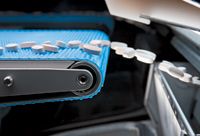
VeriSym optical inspection systems from Symetix address product and quality control needs. (PHOTO IS COURTESY OF SYMETIX.)
Optical inspection systems and size graders automate inspection tasks to reduce labor costs and protect product quality. A compact optical inspection system positions color cameras above and below the product stream to check color, size, and shape of tablets and softgel capsules. Image processing technology quickly compares each object to previously defined accept/reject standards. When a defective product or foreign object is identified, the system activates a close-coupled, high-speed ejector system to remove it from the product stream before packaging. Maximum speed is either 500,000 or 1,000,000 tablets or softgels/h. Changeover, including cleaning, takes 20 min. A touchscreen operator interface quickly recalls product settings. Product settings also can be accessed remotely via a network or the Internet (VeriSym optical inspection systems, Symetix).
The optical inspection system can be used in conjunction with a high-capacity size grader that removes foreign objects; broken tablets and fragments, twins, and clusters; and twin, under-filled, and over-filled softgel capsules. Removable decks with fixed hole sizes ensure repeatable grading at up to 1 million doses/h. Whether integrated with up- or downstream equipment or run in stand-alone mode, changeover takes five minutes and involves removing the screens, wiping down the stainless steel bed, and snapping in screens for the new size (Impulse/P size grader, Symetix).

Sanner addresses sensitive products with a range of desiccants and desiccant-equipped packaging components. (PHOTO IS COURTESY OF SANNER OF AMERICA.)
A camera/barcode scanner-based system inspects and verifies all labeled components (i.e. inserts, cartons, and other kit components) during final packaging assembly by comparing captured data with a PDF file. The system reads and matches product codes via Optical Character Recognition (OCR) or Optical Character Verification (OCV) and can be customized to match kit components against work orders or a component database, thus eliminating errors resulting from typed data. The system can be configured to require correct flow of kit packaging and identify extra or defective components or unused labels. A report details discrepancies. Optional features include seal inspection, product count, and confirmation that barcodes meet ANSI standards (Q-Spec, Complete Inspection Systems).
While current desiccant canisters lose as much as 40% of their moisture absorption capacity if one end of the canister is blocked by the package side wall or its contents, a new desiccant capsule absorbs moisture regardless of its position in a container. The capsule absorbs moisture through a paperboard disc on the top as well as through a gridded wall. A unique shape differentiates the canister from the solid dosage forms it protects and helps prevent accidental ingestion, which is a common customer complaint. In addition, canisters are less likely to break open because sides withstand greater pressure than competing products. Desiccant options include dust-free silica gel, activated carbon, and molecular sieve, as well as various combinations (360° Desiccant Capsules, Sanner of America).

Statistical weight control, fast changeover and easy cleaning are features available on the AlterNova Capsule Filler from MG America. (PHOTO IS COURTESY OF MG AMERICA)
The company also plans to display vials and tubes with stoppers or lids that contain integrated desiccants for packaging effervescent products, plus space-saving, test-strip packaging destined primarily for in-home diagnostics. The test-strip packaging integrates the drying agent in the base of the oval vial to optimize atmospheric conditions inside the package and offer better moisture protection for products like blood glucose test strips. The innovative design and one-hand opening make it easier to remove test strips and reduce the risk of contamination (StripTec One test-strip package, Sanner of America).
A nondestructive tester checks seal integrity and detects leaks in blister packs and in packaging with minimal head space, such as sachets and certain types of pouches including those with peelable seals. The system identifies defective packages through a combination of vacuum decay technology and differential force measurement. Measuring positive force deflections in the package results in higher test sensitivity. Capable of checking multiple packages in a single test cycle, the system provides a definitive pass/fail score for each item. With multi-cavity blister packs, the unit identifies the location of any defective cavity (VeriPac 410, PTI).
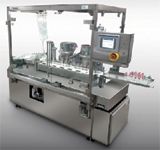
The small size and flexibility of the FLT small batch vial filler are designed for clinical trials. (PHOTO IS COURTESY OF BOSCH PACKAGING)
New machines
Making its North American debut, an all-electric version of a standard blow-fill-seal machine minimizes carbon footprint and reduces particulate generation. Ideal for parenteral products, the all-electric machine has the flexibility to produce sterile, liquid filled, tamper-evident containers, ranging from 0.5–500 mL, in full-scale production quantities. An integral product buffer tank meets tight fill tolerances (Model 628 All-Electric Machine, Weiler Engineering).
A laboratory-sized capsule filler that simulates all production parameters is the first of such designs produced for the United States. Designed to process small batches for research and development or clinical purposes, the unit delivers higher powder yields for small product batches ranging from 100–300 mL. A "slide-gate" option increases batch yields and the ability to fill free-flowing granulates or pellets via the powder station (GKF 702 capsule filler with Mini-Bowl filling station, Bosch Packaging).
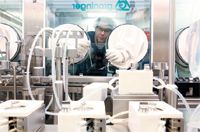
Groninger & Co.’s aseptic filling technology provides a disposable fluid pathway. (PHOTO IS COURTESY OF GRONINGER & CO.)
Another new capsule filler, an intermittent-motion machine, handles 105,000 capsules/h and can be upgraded to 150,000 or 180,000 capsules/h. The flexible machine has a tamping disk for powder filling and also fills pellets, tablets, and liquids, alone or in combination. Other features include statistical weight control, fast changeover, and easy cleaning (AlterNova Capsule Filler, MG America, subsidiary of MG2).
An upgraded, small-batch, vial filler with rotating, crimp-roller capping reduces changeover time because vial diameter changes involve only three guide parts. The machine fills volumes from 2–100 mL at rates of up to 30 vials/min and can be equipped with a 100% checkweighing option. Peristaltic or rolling diaphragm pumps handle fills using reusable or single-use parts. Because the machine enables automated production on a smaller scale, it reduces risks and smooths scale-up to full-scale production (FLT small batch vial filler, Bosch Packaging).
An aseptic filling system with a disposable product contact path has been developed and validated for a U.S. user. The final, "ready-to-use", disposable system provides a cost-effective alternative to standard clean/steam-in-place regimens (aseptic filling technology, Groninger & Co. GmbH; disposable fluid pathway, Millipore).
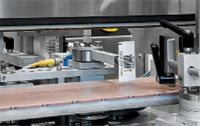
NJM Packaging Model 277 Autosert Outsert Applicator handles outserts up to 1.5 inches thick. (PHOTO IS COURTESY OF NJM PACKAGING.)
A semiautomatic, servo-driven, benchtop filler with touch screen interface has the ability to accommodate four pumps (i.e. piston, peristaltic, gear, and lobe) on one base so pumps can be changed as needed. Fill volumes range from milliliters to gallons with viscosities from aqueous to viscous. Other features include memory for recipes and the ability to up- and download data. A unit on display has a peristaltic pump suitable for clean/sterile fills ranging from 50–1100 mL. Since the peristaltic pump holds fluid within a flexible tube fitted inside a circular pump casing, product only contacts the inside surface of the tubing. As a result, disposal of the fluid pathway minimizes cleanup (AdaptaFil filler, Filamatic).
An outsert applicator handles today's thicker documents with a vacuum extraction system and hot-melt glue sealing. Two servomotors control the movement of a vacuum-cup-equipped arm. The arm moves in and out to remove an outsert from the hopper. Once the outsert is captured, the arm rotates to position the outsert on the bottle. Designed to be integrated with a primary labeler, the applicator handles outserts measuring 0.875 x 1.125 in. (22 x 29 mm) to 2.5 x 4 in. (63 x 100 mm). Outserts may be up to 1.5 in (38 mm) thick (Model 277 Autosert Outsert Applicator, NJM Packaging). An outsert feeder expands storage capacity to enable run times of up to one hour without reloading (Model 276 Carousel Outsert Feeder, NJM Packaging).
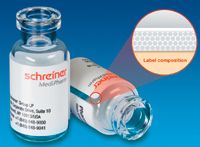
Pharma-Cushion labels from Schreiner MediPharm can be applied by existing equipment. (PHOTO IS COURTESY OF SCHREINER MEDIPHARM.)
Label innovation
A film/foam label identifies product while protecting vials during processing, transit, and storage. Preventing breakage not only reduces waste and associated expenses, but also prevents the release of toxic substances and injury to transportation, warehouse, and healthcare personnel. The label also enhances container/closure integrity, thereby preventing product contamination. A thin, flexible structure ensures easy application. Labels can be handled on existing equipment and eliminate the need for complex secondary packaging (Pharma-Cushion label, Schreiner MediPharm).
Integrated lines
A group of companies has joined forces to offer pharmaceutical packagers one-stop shopping for new packaging lines. The collaboration was officially launched in May 2011 at Interpack in Dusseldorf, Germany. The group anticipates collaborative projects will account for about one-fourth of its members' business. In preparation, it has established joint project teams and a unified service network with 600 employees worldwide. Packagers benefit from improved interface management, comprehensive documentation, and on-site support (Excellence United consists of Bausch-Ströbel, Fette Compacting, Glatt, Harro Höfliger, Uhlmann, and Visiotec).

Dispense Lid from Constantia Flexibles has inner seal with cut-out. (PHOTO IS COURTESY OF CONSTANTIA FLEXIBLES.)
One partner plans the North American unveiling of its latest tablet press. Already in use in Europe and India, its design simplifies three primary tablet press functions: changeover, operation, and maintenance. The design has an optional and user-configurable third set of compression stations that allow it to quickly convert to double-layer use. The unit easily handles difficult products requiring extended dwell time. Features include a new filling cone, completely redesigned compression stations, an optimized first-layer sampling function, and a through-the-column, all-in-one, corner discharge assembly (FE55 Tablet Press with Tri.Easy design, Fette Co. America).
Blister packaging
A two-ply, opaque, polyethylene terephthalate (PET)/foil laminate lidding offers three levels of child-resistant (CR) protection. The hardest-to-access design achieves the highest rating (i.e., F=1) and is designed to be opened with a tool such as scissors (Lock-tight lidding, Winpak). Another version features a peelable opening for fragile pharmaceuticals or unique drug delivery medication systems (Safety-Pak Plus PL lidding, Winpak). The third option relies on traditional peel-push CR opening but provides a full-panel peel (Safety-Pak Plus PP lidding, Winpak).
A customized cutout in induction-sealed foil lidstock controls dispensing of tablets, capsules, or liquids from plastic bottles. The lidstock reduces the chance of product contamination during dispensing and serves as an anticounterfeiting tool because the dispensing design is difficult to copy. As it makes its North American debut, it seeks its first user (Dispense Lid, Constantia Flexibles, formerly Constantia Hueck Foils).
A space-saving, unit-dose blister pack reduces material and space requirements by 20–30% in refrigerators, warehouses, and transportation vehicles while providing greater product protection and less head space. A circular area in the middle of each cavity improves product access. The user simply pushes down on two flanges, which crumples the center of the pack and presents the dose (Crumple Zone Blister, Intini Marketing).
One diecutting change converts non-CR blisters to CR and senior-friendly blisters. A small, semicircular cut in the blister flange allows multiple blisters to be strung together, and the "needle" is locked in place in a box with an F=1 CR rating. Applications include any product in a non-CR blister that needs CR protection and pharmacy use for pre-packed blisters (Medi-Lock box with Rod Lock, Intini).
Hallie Forcinio is Pharmaceutical Technology's Packaging Forum editor, 4708 Morningside Drive, Cleveland, OH 44109, tel. 216.351.5824, fax 216.351.5684, editorhal@cs.com.
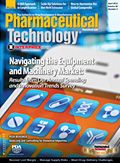
Drug Solutions Podcast: A Closer Look at mRNA in Oncology and Vaccines
April 30th 2024In this episode fo the Drug Solutions Podcast, etherna’s vice-president of Technology and Innovation, Stefaan De Koker, discusses the merits and challenges of using mRNA as the foundation for therapeutics in oncology as well as for vaccines.
Pharmaceutical Tariffs Are Imminent: How Industry is Bracing for Impact
April 16th 2025On April 14, 2025, the Trump Administration launched a national security-driven investigation into pharmaceuticals, a move that will likely result in tariffs being placed on pharmaceutical drugs, ingredients, and other components that are imported from outside of the United States.